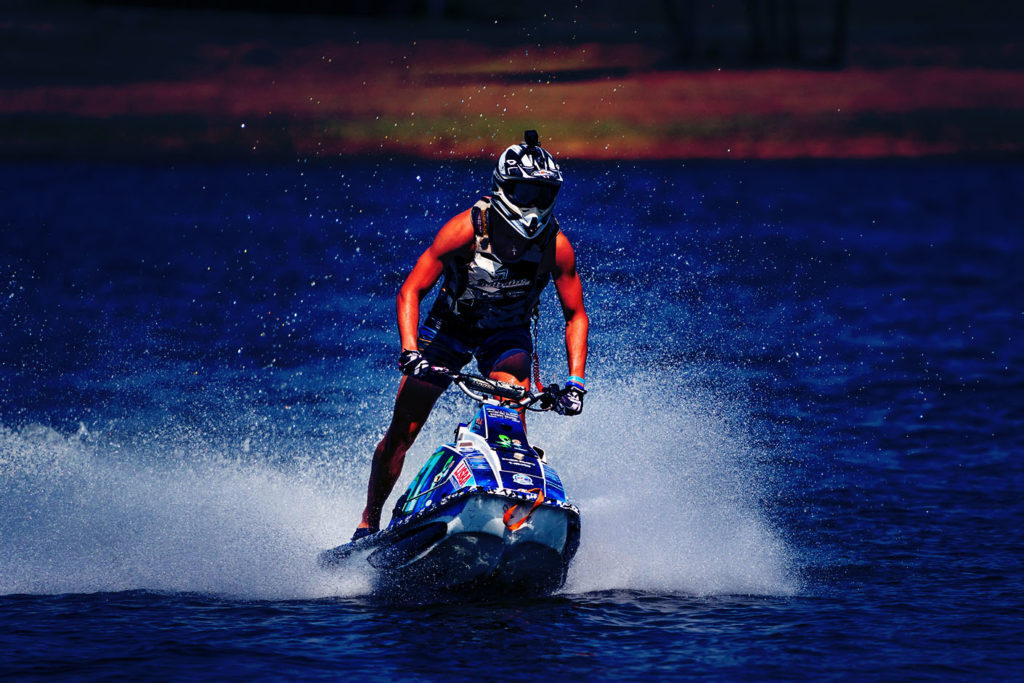Riding a jet ski in choppy water requires skill and careful handling to maintain control and ensure safety.
Here are some tips for riding a jet ski in choppy water…
- Maintain Balance – Keep your body centered and balanced on the jet ski. Lean slightly forward to maintain control and stability.
- Adjust Speed – Moderate your speed according to the conditions. In choppy water, slower speeds may be safer to maintain control and reduce the impact of waves.
- Use Proper Technique – Ride with your knees bent and use your legs as shock absorbers to cushion the impact of waves. This helps maintain stability and reduce the strain on your body.
- Keep a Firm Grip – Hold the handlebars or grips firmly to maintain control, especially when riding over waves.
- Approach Waves Cautiously – Approach waves at an angle rather than head-on. This allows the jet ski to ride up and over the waves more smoothly.
- Avoid Sudden Movements – Smooth and gradual movements are key to maintaining stability. Avoid abrupt turns or acceleration/deceleration that can lead to loss of control.
- Be Aware of Surroundings – Look for other watercraft, swimmers, or obstacles that may be difficult to see in choppy conditions.
- Wear Proper Gear – Always wear a properly fitting life jacket or personal flotation device (PFD) to ensure safety in case of falls or accidents.
- Stay Calm – Remain calm and focused while riding in choppy water. Panic can lead to poor decision-making and increase the risk of accidents.
- Know Your Limits – If the water conditions become too challenging or unsafe, consider returning to calmer waters or shore.
By practicing these tips and maintaining situational awareness, you can ride a jet ski safely and confidently, even in choppy water conditions. Adapting your riding style and technique to the prevailing water conditions is essential to ensure an enjoyable and safe experience.



